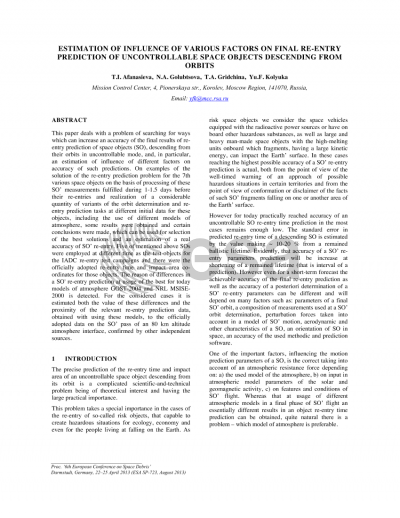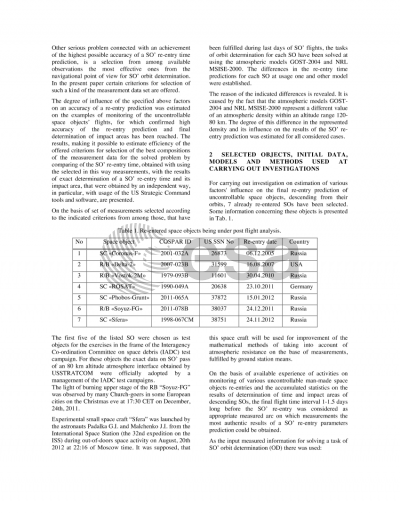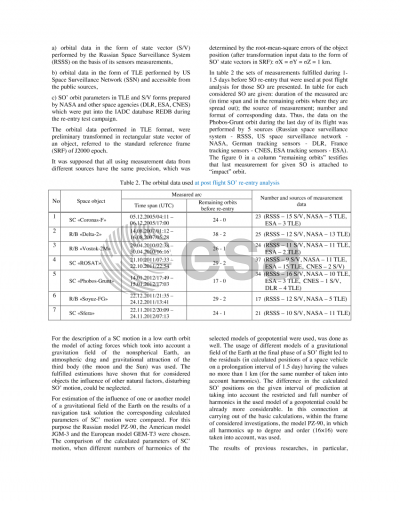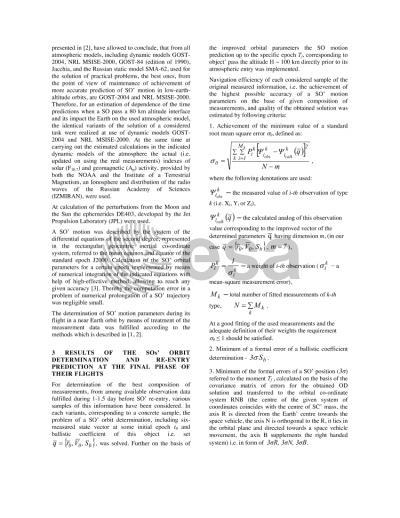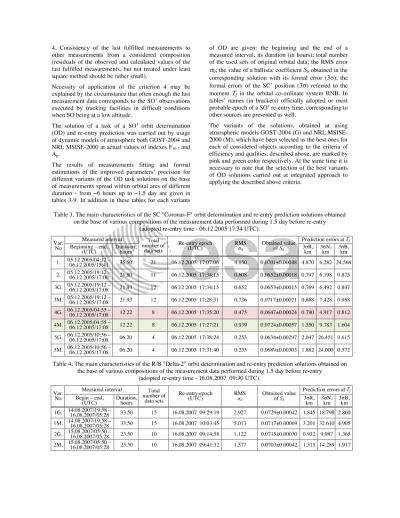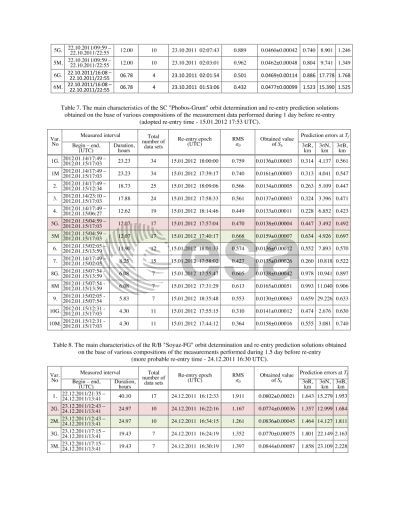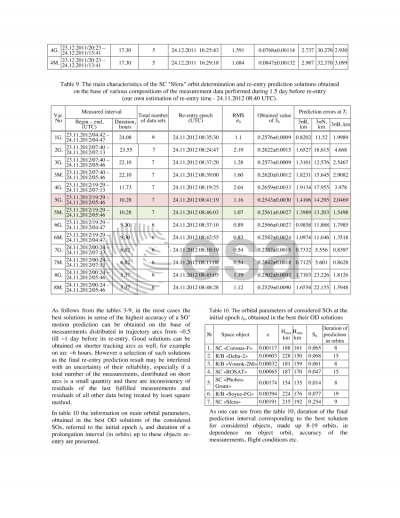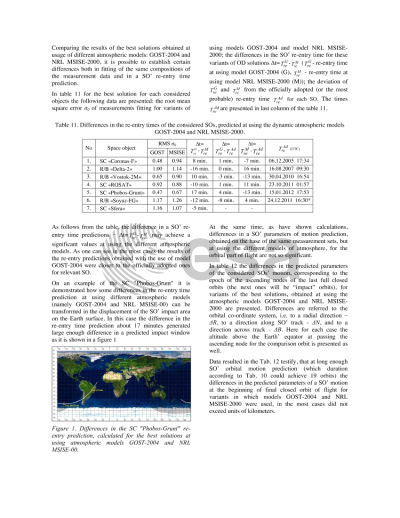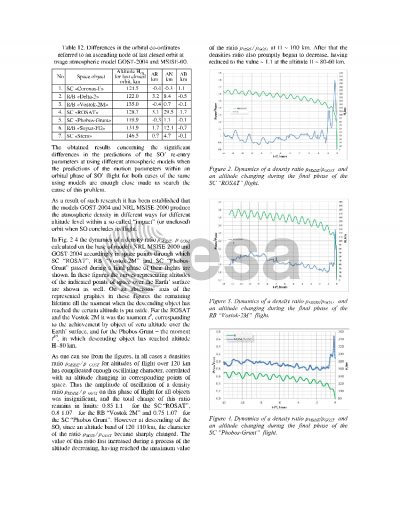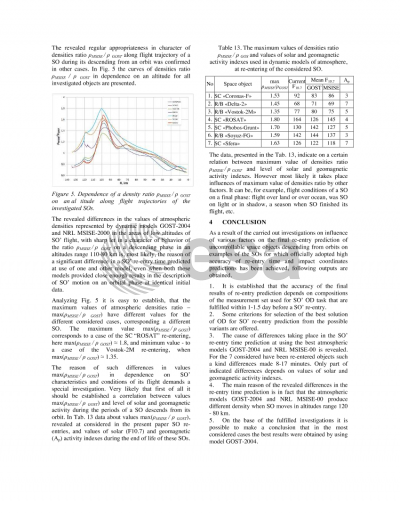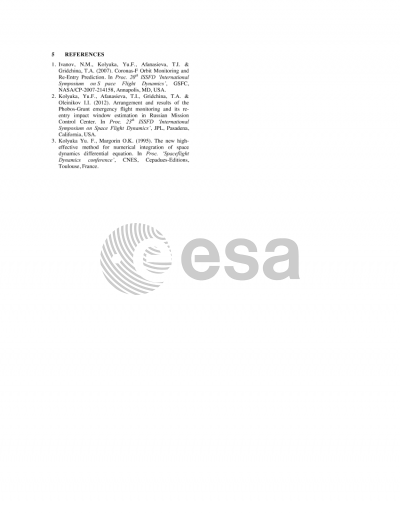Document details

Abstract
This paper deals with a problem of searching for ways which can increase an accuracy of the final results of re-entry prediction of space objects (SO), descending from their orbits in uncontrollable mode, and, in particular, an estimation of influence of different factors on accuracy of such predictions. On examples of the solution of the re-entry prediction problem for the 7th various space objects on the basis of processing of these SO' measurements fulfilled during 1-1.5 days before their re-entries and realization of a considerable quantity of variants of the orbit determination and re-entry prediction tasks at different initial data for these objects, including the use of different models of atmosphere, some results were obtained and certain conclusions were made, which can be used for selection of the best solutions and an estimation of a real accuracy of SO' re-entry. Five of mentioned above SOs were employed at different time as the test-objects for the IADC re-entry test campaigns and there were the officially adopted re-entry time and impact area co-ordinates for those objects. The reason of differences in a SO' re-entry prediction at usage of the best for today models of atmosphere GOST-2004 and NRL MSISE-2000 is detected. For the considered cases it is estimated both the value of these differences and the proximity of the relevant re-entry prediction data, obtained with using these models, to the officially adopted data on the SO' pass of an 80 km altitude atmosphere interface, confirmed by other independent sources.
Preview
